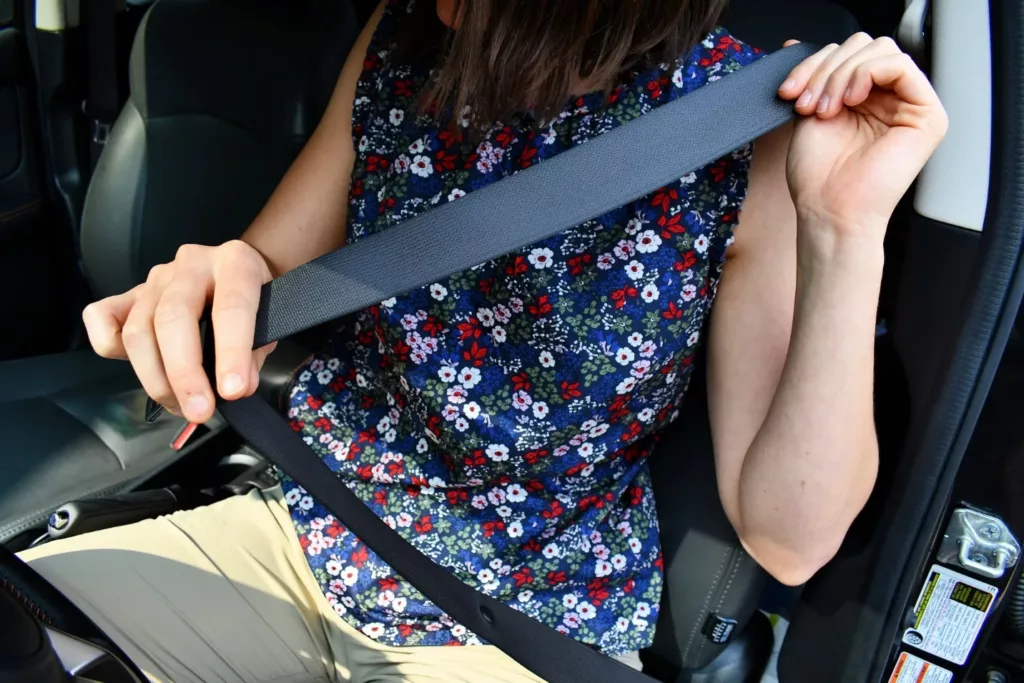In 2009, there were over 30,000 fatalities and up to 2.2 million injuries on American roads due to car crashes.
Over 50% of the people who died were unrestrained during the crash. No doubt wearing a seatbelt continues to be the most effective way to prevent serious injuries or death in an accident.
However, there is still considerable debate surrounding the effectiveness of seatbelts and whether or not they contribute to injuries. The laws requiring passengers to wear a seatbelt also need to be clarified.
In some states, only front-seat and under 18 passengers must be restrained in a moving car. Of course, wearing a seatbelt in the backseat still makes sense.
Numerous laws, education, and technology are geared toward increasing the use of seatbelts. Advanced car safety features have also drastically reduced car accidents. As a result, passengers are also reducing their use of seatbelts, raising the question, “Are seatbelts still effective?”
Facts About Seatbelts and Their Effectiveness
From 1975 to 2017, seatbelts have saved over 370,000 lives. The National Highway Traffic Safety Administration estimates that lap and shoulder seatbelts reduce the risk of:
- Death by 45% for front-seat passengers
- Moderate to severe injuries by 50% for front-seat passengers
- Death by 60% of front-seat passengers in light trucks
- Moderate to severe injuries by 65% for front-seat passengers in light trucks
During the COVID-19 pandemic, seatbelt use reduced significantly. As a result, vehicle occupant deaths increased by up to 51% in 2020, up from 46.6% in 2019. The latest data from the National Occupant Protection Use Survey shows that seatbelt use is 90.3%.
The CDC also estimates that:
- 53% of drivers and passengers involved in fatal accidents were not wearing seatbelts.
- Unrestrained passengers and drivers are 30 times more likely to be ejected from the car in a collision. Up to 75% of those die from their injuries.
- Car accident-related deaths and injuries cost up to $70 billion annually in medical costs and lost income.
Do Seatbelts Cause Death in Car Accidents?
While seatbelts save lives, in rare cases, they can cause death in a collision. However, a seatbelt will only cause death or severe injuries due to negligence.
For instance, passengers improperly wearing seatbelts can cause damage to the internal organs. In some cases, improper use of seatbelts on children can cause severe injuries to the head.
The National Organization for Youths Safety also offers statistics about seatbelt use among children and youth.
- In 2008, 64% of unrestrained victims between 13 to 15 and 21 to 34 died in car accidents.
- In 2008, seatbelt use saved over 13,000 lives of passengers over four years old.
- Over 88% of passengers over 16 strongly prefer to have their seatbelts on in case of an accident.
- 16 to 20-year-old passengers commonly cite forgetfulness or traveling a short distance as the main reason they did not wear a seatbelt.
Seatbelt use saves lives, and unrestrained passengers face a variety of risks. It should not take losing a loved one to realize that seatbelts are essential.
Spending a few extra seconds to buckle up when you get in the car could save you from serious injuries resulting in life-long disability or even death.
Seatbelt Safety for Adults
Buckling up keeps you safe and might even improve airbag performance. While all modern vehicles must come equipped with airbags, some manufacturers design airbags only to deploy if the occupant is wearing a seatbelt.
Ensure you are correctly buckled up to stay prepared in case of aggressive, impaired, or distracted drivers. Your seatbelt keeps you safe in your seat in case of high-impact collisions that may cause you to be completely ejected from the vehicle.
Some guidelines to ensure you are adequately restrained include:
- Secure the shoulder belt and lap belt across the rib cage and your pelvis to ensure you can withstand a crash force.
- Place the shoulder belt away from your neck.
- Always ensure the shoulder belt goes across your mid-chest area.
- The lap belt should rest across your hips and not on your stomach.
- Never place the shoulder belt behind an arm or your back
Before buying a car:
- Ensure that the seatbelts are a good fit.
- Inquire about seatbelt adjusters to get a better fit.
- When purchasing a brand-new vehicle, call the manufacturer to request seatbelt extenders for a roomier fit
- If you own an old model or a classic vehicle, consider contacting the manufacturer to retrofit the car with safer, modern shoulder seatbelts.
Should You Wear a Seatbelt if You are Pregnant?
Yes, if you are pregnant, always buckle up through all stages of the pregnancy to protect yourself and the unborn child.
Ensure the seatbelt is away from your neck and remove any slack to ensure it fits snuggly. Do not place the seatbelt over your belly.
You can also adjust your seat to achieve proper seatbelt placement in an upright, comfortable position. Doctors recommend keeping as much space as possible between your belly and the steering wheel.
However, ensure you can comfortably hold on to the steering wheel and reach the pedals. Avoid reclining your seat too far to minimize the gap between your seatbelt and shoulder.
Finally, do not let your belly touch the steering wheel if you are driving while pregnant.
Seatbelt Laws
There are primary and secondary enforcement seatbelt laws. Primary enforcement allows police officers to pull over unrestrained drivers or passengers and issue tickets.
However, secondary enforcement seatbelt laws only allow a police officer to issue a ticket if the driver has a previous violation.
Seatbelt use rates are up to 9% higher in primary enforcement states than in secondary enforcement states. If, in 2008, the rates in secondary states matched primary law states, over 7.3 million more adults would wear seatbelts.
In most states, police can pull you over for riding or driving without a seatbelt. They may also be permitted to issue a violation. Children under 12 must be seated in the rear seats and restrained.
Regardless of age, front-seat passengers and children under 18 must always be restrained. Even the slightest increase in speed can lead to severe injuries in case of a crash. However, wearing your seatbelt can make all the difference between life and death.
Should You Hire an Attorney to Investigate Your Car Accident Injury Case?
The NHTSA reports unrestrained accident victims are likelier to get ejected from the car. As a result, they may suffer serious injuries or even death. Of the 50.1% unrestrained victims on American roads, 55% were male occupants, while 57% were female.
If you or a loved one have been involved in a car accident, hiring a car accident attorney is the best to find out who is at fault. You can recover compensation for injuries and damages from the negligent party in the accident.
An accident attorney can also help you with the following:
- Determine the cause of the accident.
- Contact potential witnesses.
- Consult expert witnesses.
- Negotiate with the insurance companies.
- Represent you if your case goes to trial.
With 49 out of 50 states enforcing seatbelt laws, even if you were unrestrained at the time of the accident, an expert attorney can help your fight for the best outcome. Contact an attorney to maximize your compensation.


